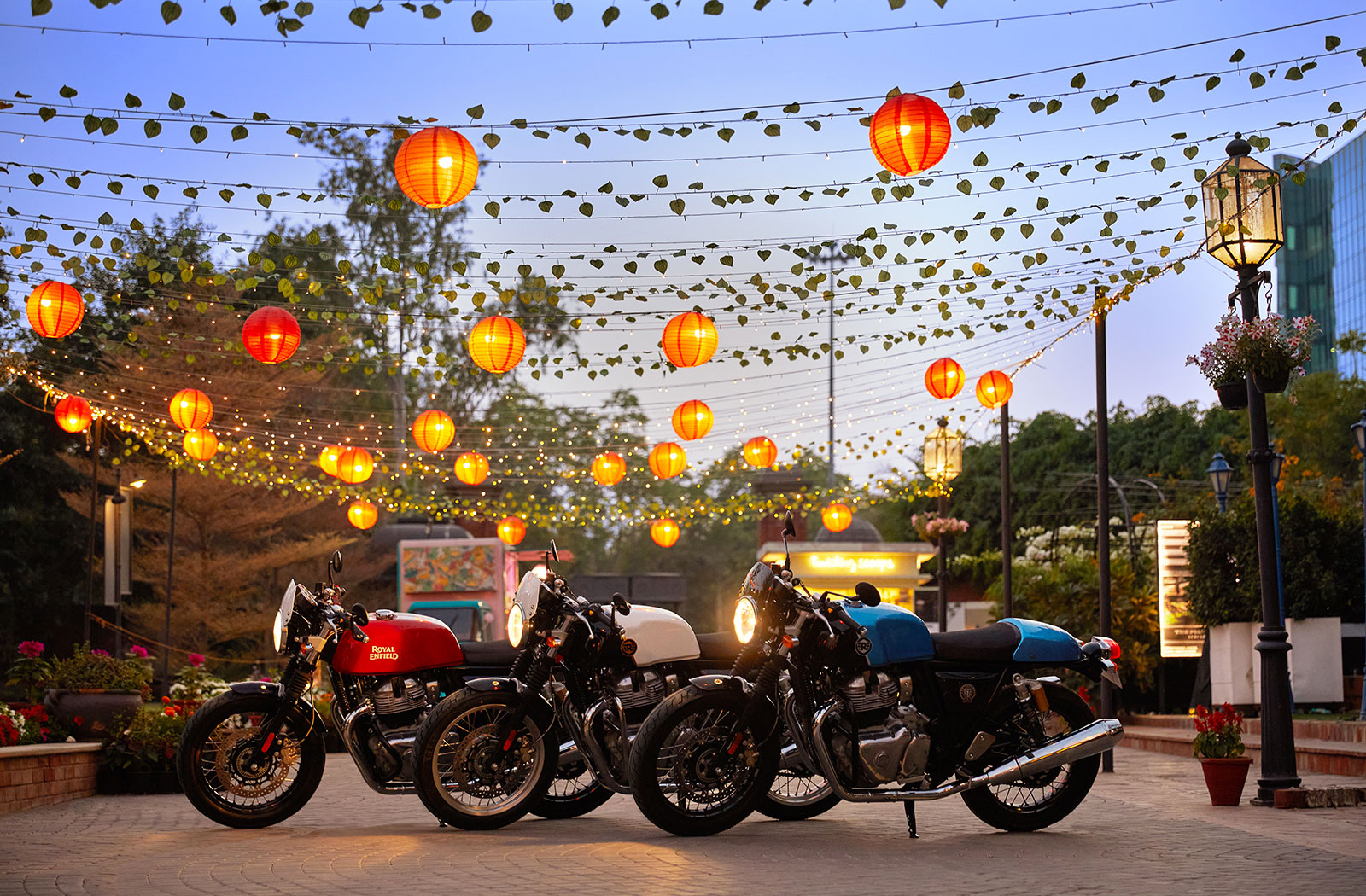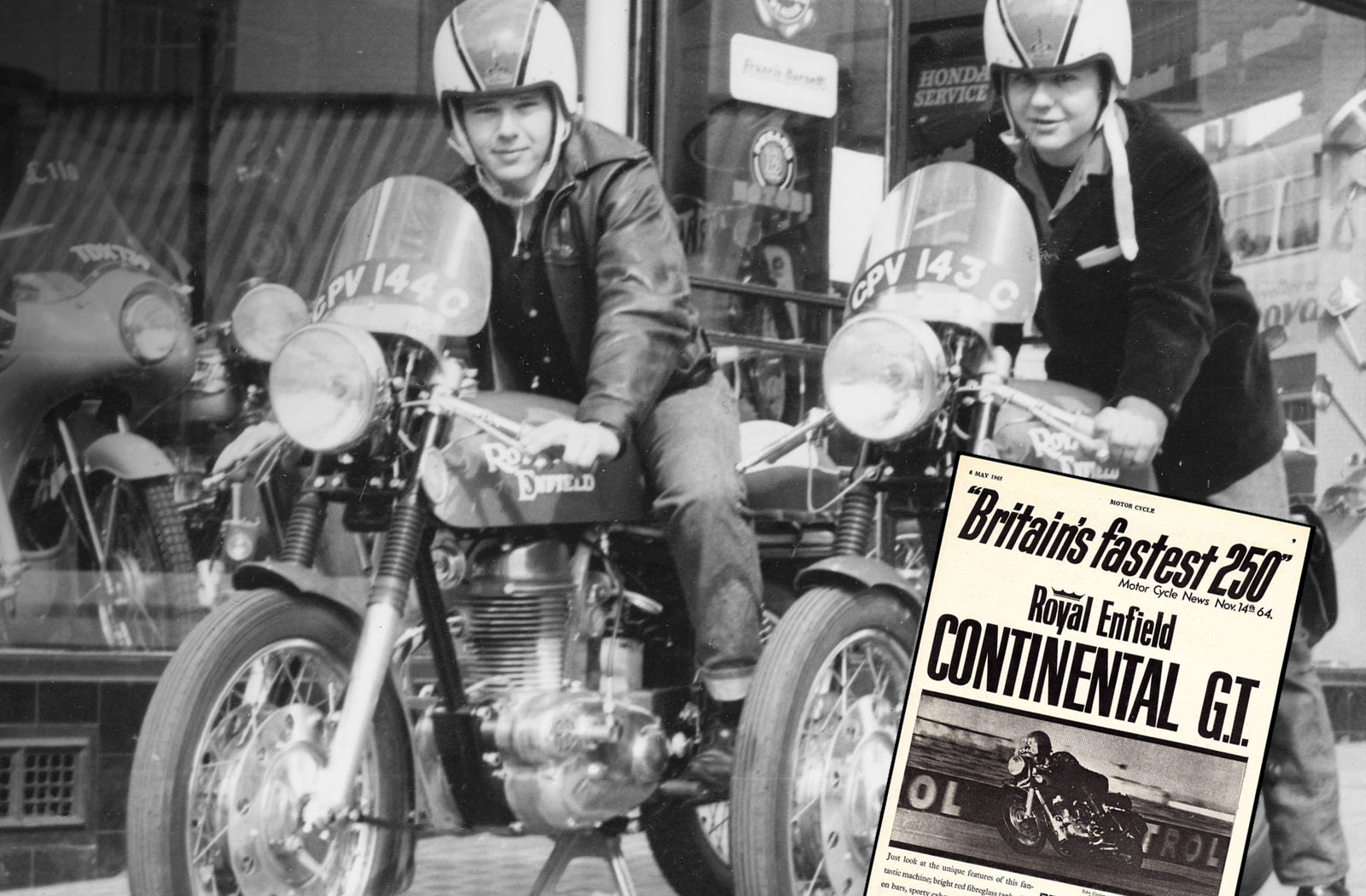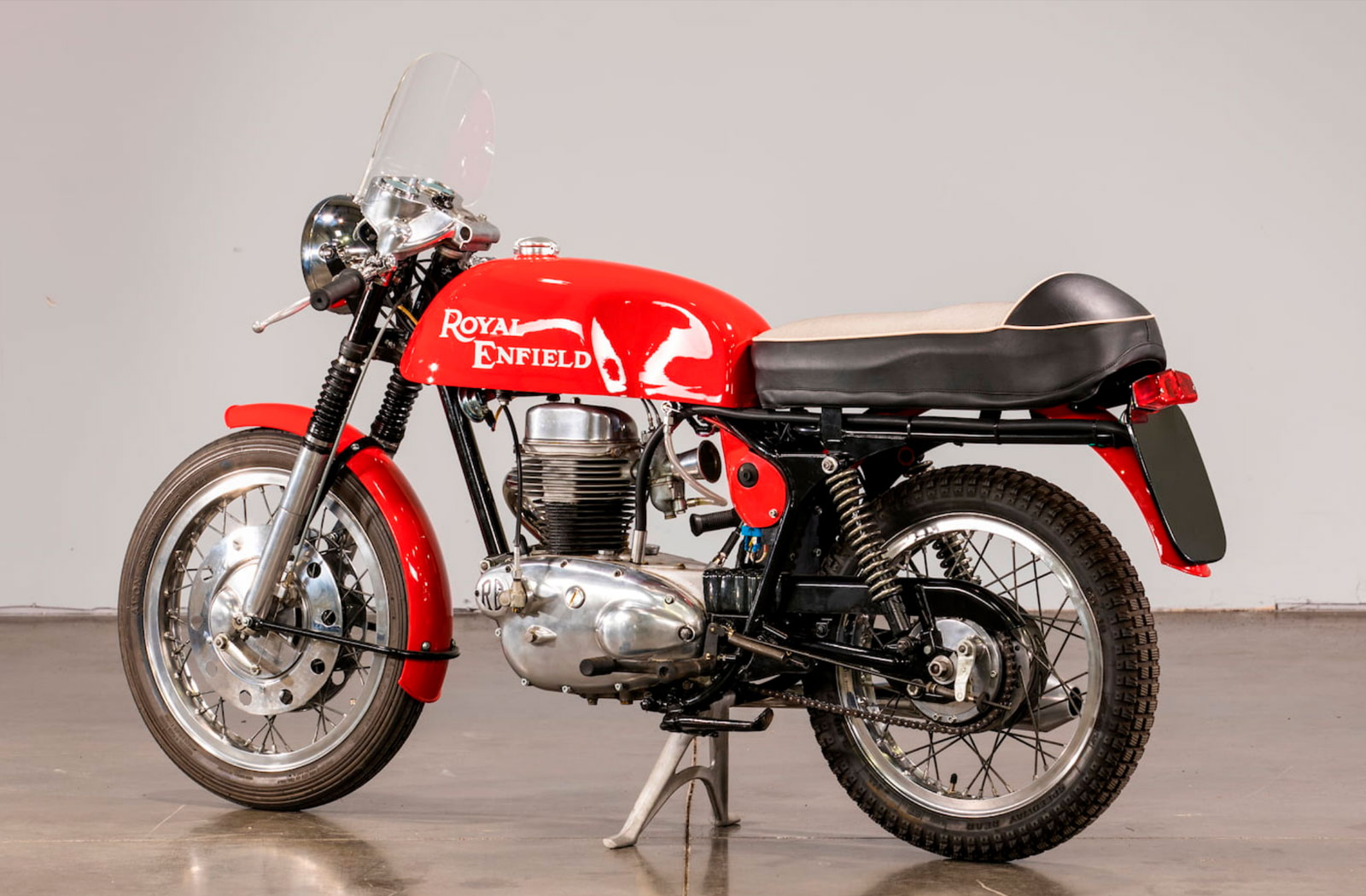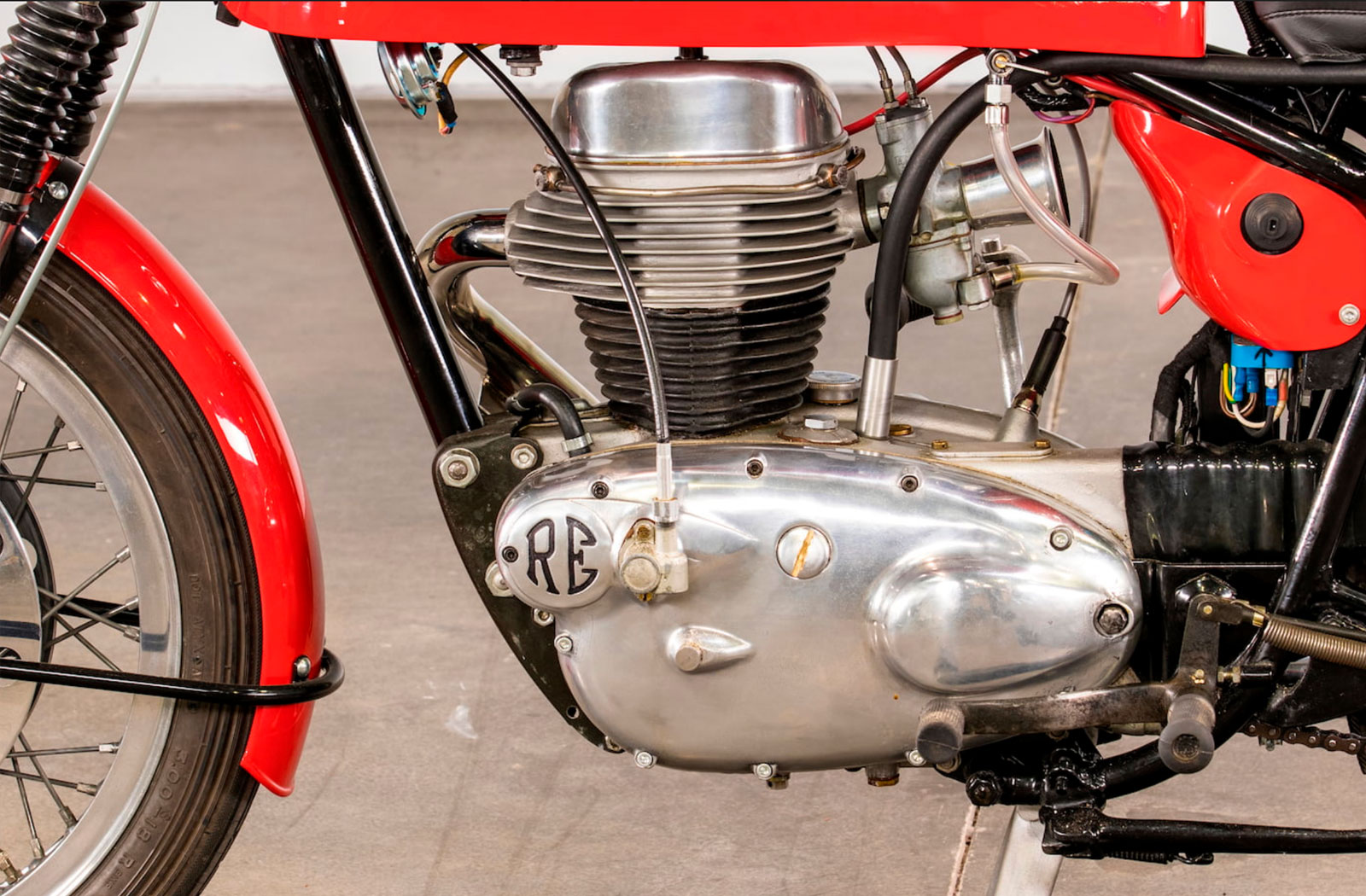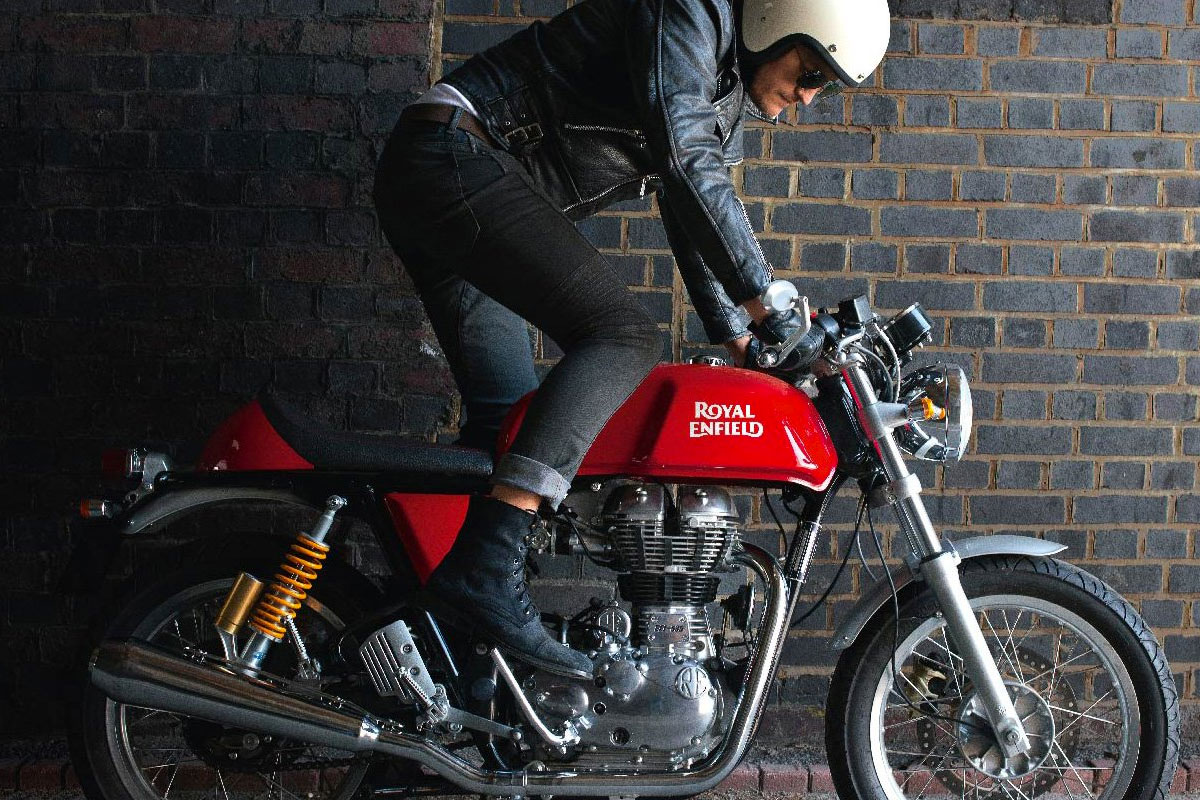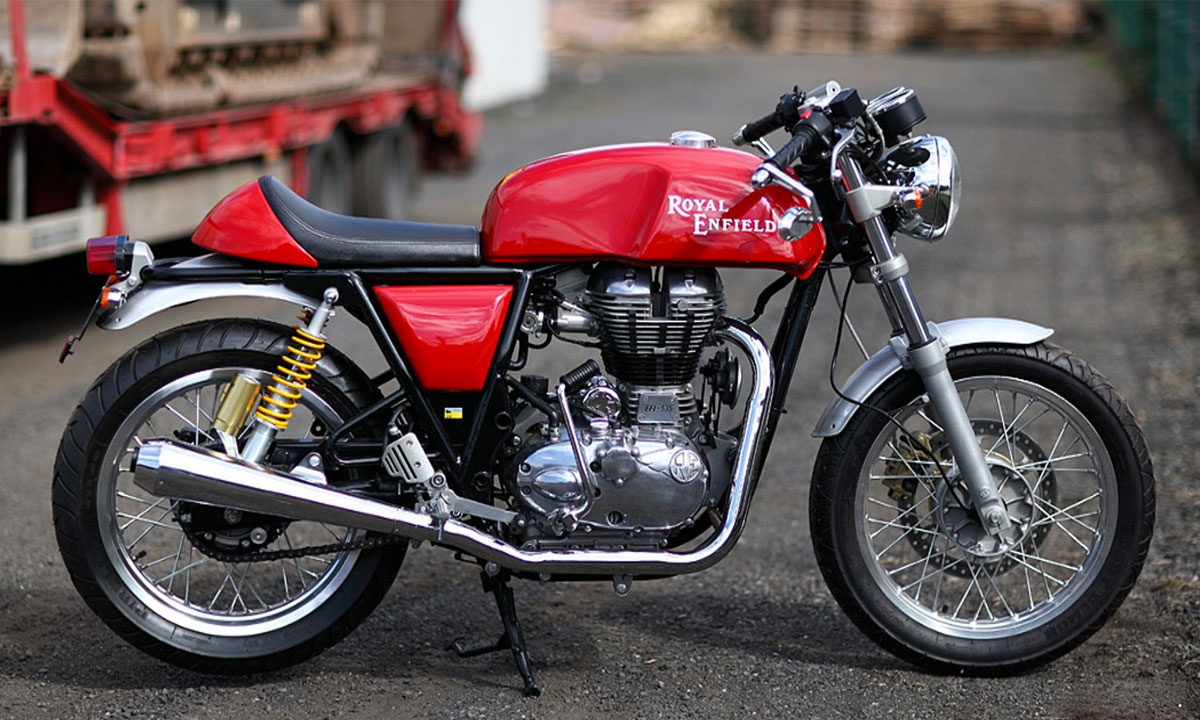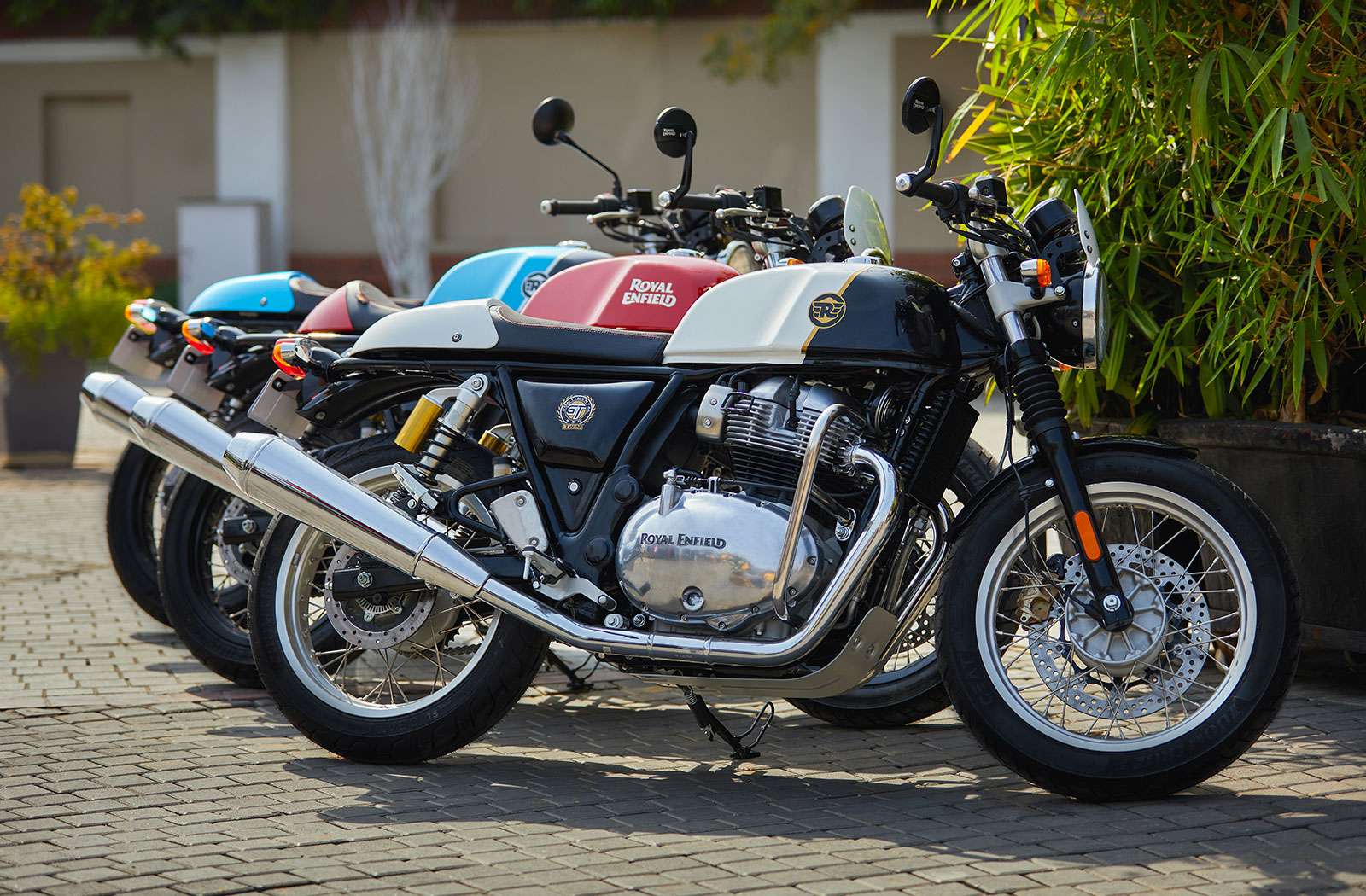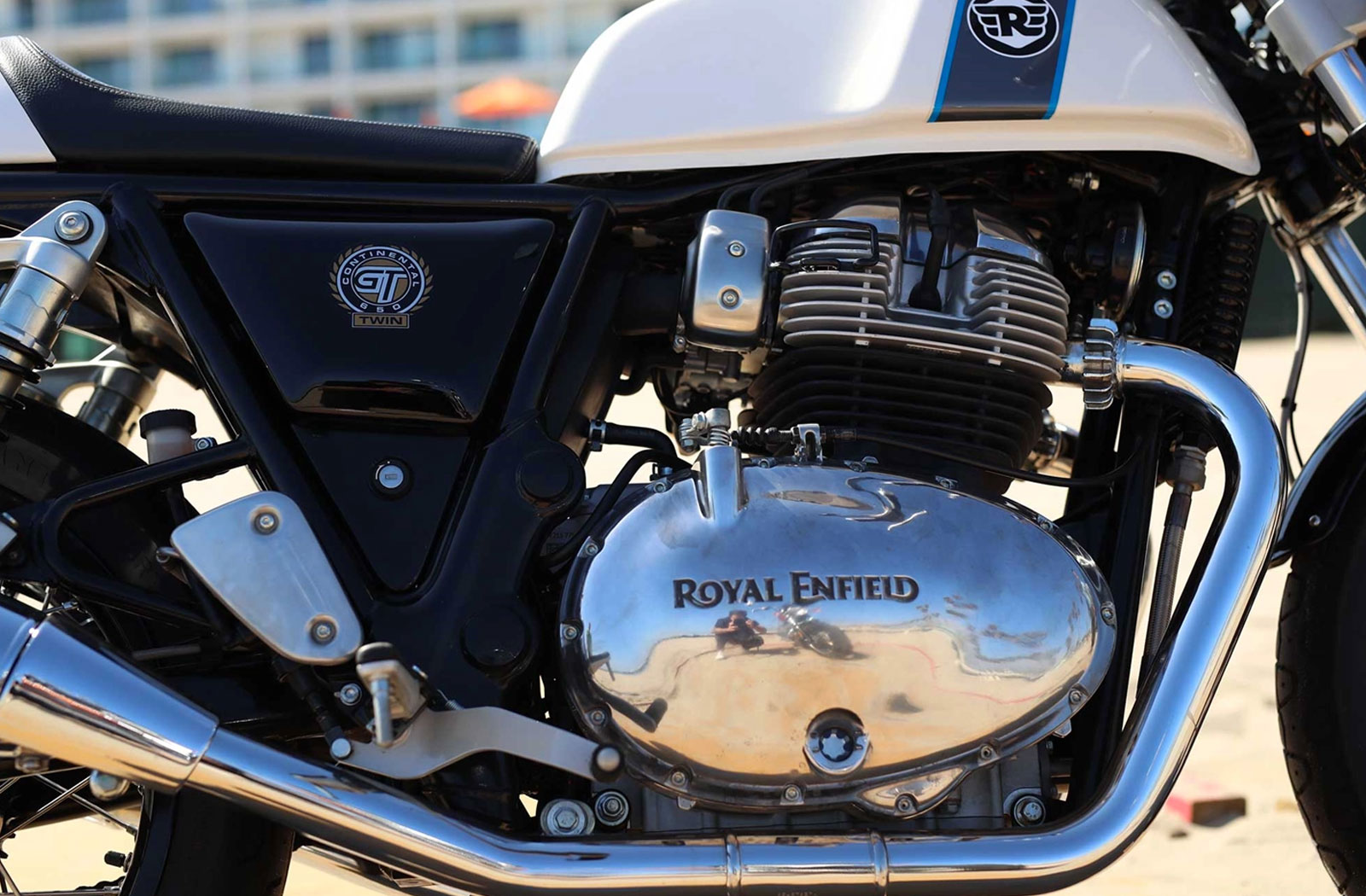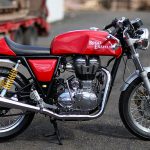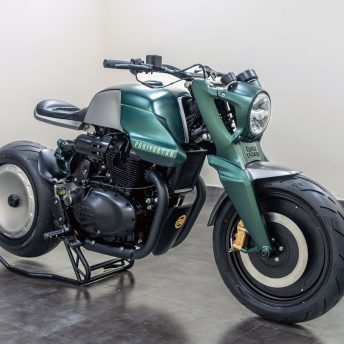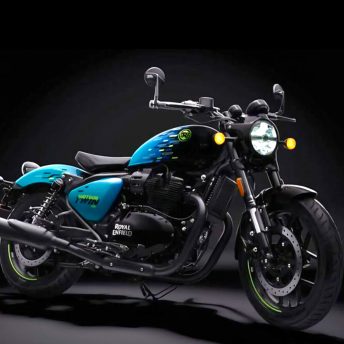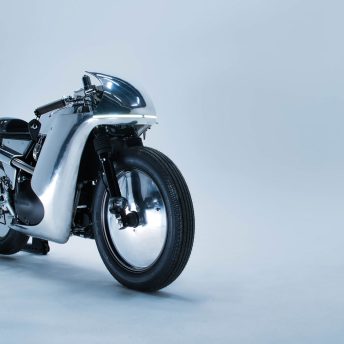Factory-built cafe racers are somewhat of a paradox. By definition, cafe racers are customised motorcycles built by enthusiasts or aftermarket workshops. Regardless of that fact, manufacturers have insisted for decades that they too can build a motorcycle worthy of the cafe racer name.
Royal Enfield knows a thing or two about factory-built cafe racers. Back in 1963, they released the first-ever production cafe racer, the Continental GT 250. Since then the manufacturer has released several models that bare the Continental name and accompanying cafe racer styling. Today we’re taking a look at the history of the Royal Enfield Continental GT cafe racer to see where it all started and how far it’s come.
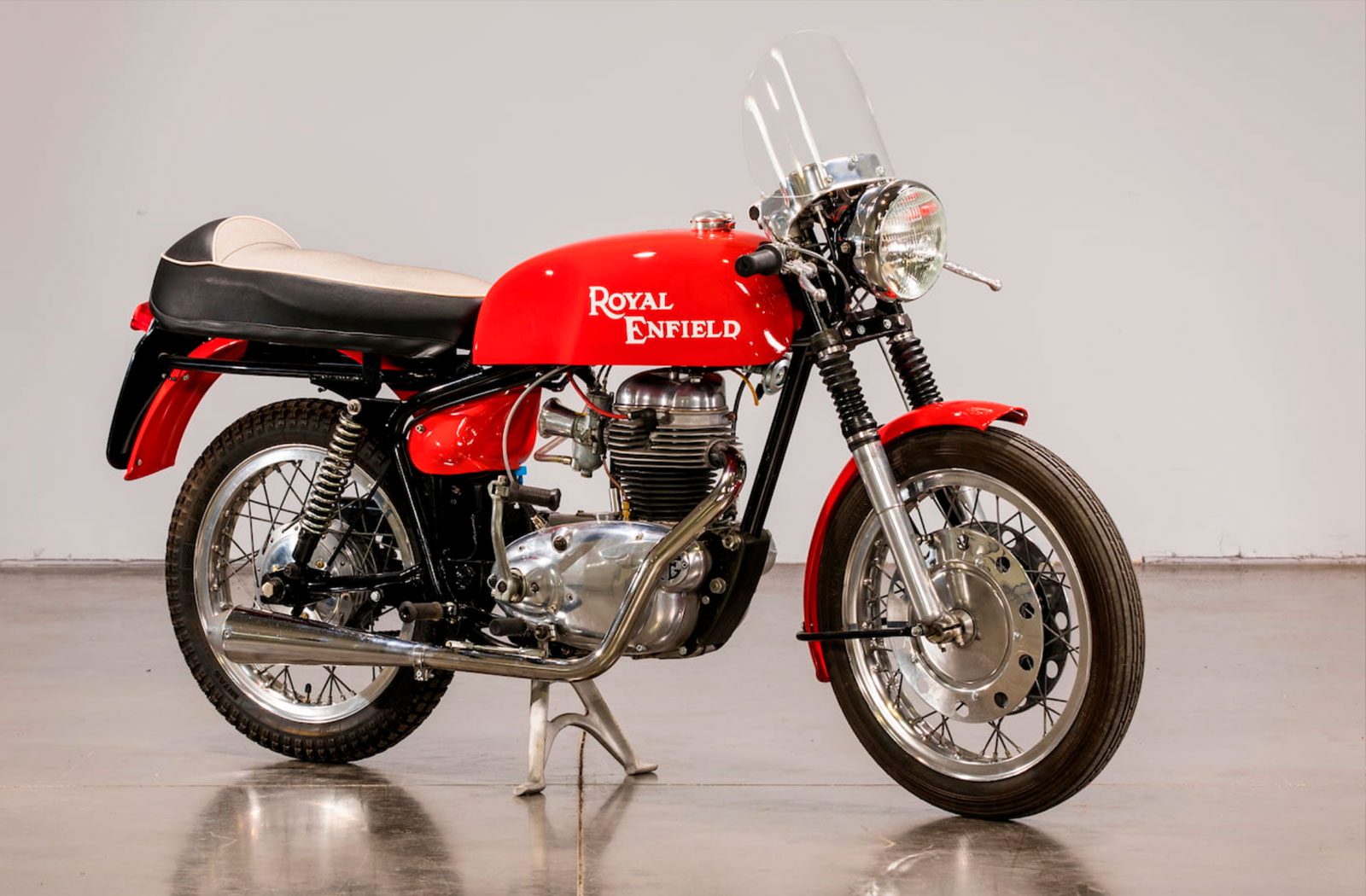
1963 Royal Enfield Continental GT 250
Royal Enfield released the Continental GT 250 at the peak of the original cafe racer craze. They saw a gap in the market for a good-looking, learner-legal motorcycle that was a decent performer and had an affordable price tag. During the development of the Continental GT 250, it was rumoured that Enfield invited young apprentices to contribute their ideas during the design process. They saw this as a way of appealing to the untapped market of young, fashion-conscious riders…and it worked.
The resulting Continental GT 250 design ticked all the cafe racer styling boxes. The GT’s fibreglass fuel tank was long and low and was held in place by a rubber strap just like racing motorcycles of the era. Twin Smith’s gauges sat in a specially designed housing on the yoke displaying speed and revs. The seat offered enough space for 2 and had a classic racer hump at the rear. The seating position was race-inspired too thanks to clip-on handlebars and rear-set footpegs. A set of cooling discs on the front drum beefed up its appearance but no functional purpose other than to look cool and the low-slung swept exhaust wore a large megaphone-style muffler.
As its name suggested, the 1963 Continental GT 250 was powered by a 250cc single cylinder built using an engine Enfield already had in their inventory. Based on the company’s successful Crusader Sports platform the 250 engine had an increased compression ratio of 9.5:1, a specially designed crankcase breather and a 5-speed gearbox that had an extra cog in 5th gear. The changes allowed the GT to trump the top speed of the Crusader by 5mph to record an official speed of 85mph. That figure also earned the bike the title of ‘Britain’s fastest 250’.
Prior to the release of the new model Royal Enfield bravely arranged a long-distance run for a group of road riders that started in the north of Scotland and ended on the southern coast of Britain. After more than 22 hours of riding the bikes successfully reached their destination. Enfield also arranged for a rider to do 8 high-speed laps at Silverstone raceway. Despite inclement weather, the GT completed its task, recording some impressive average speeds without issue. It was PR gold and those achievements along with a class-dominating top speed made the Continental GT 250 an instant hit. It was, for a time, considered the saviour of the struggling Royal Enfield brand.
As with most of the British motorcycles built during the fifties and sixties, the Continental GT 250 wasn’t without its idiosyncrasies. However, it is now considered an icon of 1960s British motorcycle history and is known for being on the earliest factory-built cafe racers to ever be sold to the public.
2013 Royal Enfield Continental GT 535
Fifty years after the release of the Continental GT 250 the cafe racer scene was experiencing a resurgence. Royal Enfield, now solely under Indian ownership, once again saw an opportunity to tap into the trend and set out to do it with a bang. The result was the Continental GT 535.
The 2013 Royal Enfield Continental GT 535 was an entirely new motorcycle that was unlike any other in the company’s lineup, but its bloodline was unmistakable. For the design of the GT 535, Enfield enlisted the help of British motorcycle frame experts Harris Performance Products and the UK design firm Xenophya Design. Not only was this an hommage to a British icon, but it was also created with the help of British businesses.
The GT 535 bore an uncanny resemblance to the 1963 GT 250 though more refined and modern. The fuel tank was now steel but was a dead ringer for the original. The saddle ended with a racer-style hump although now made from ABS plastic. The dash consisted of 2 clocks for speed and revs and the slightly more relaxed riding position was a result of clip-on handlebars and rear set foot controls. The 535’s upswept exhaust followed an almost identical line to the GT 250s and even the lighting was styled directly after the original. Enfield also stepped things up with the production of this exciting new model. They were hell-bent on increasing their international sales so quality control was a priority. The most notable difference though was the big increase in engine capacity.
Sitting within the Continental GT 535 twin-loop tubular steel frame was the largest capacity and most powerful engine in the manufacturer’s range. The 535cc single put out 30hp and 44Nm of torque. It’s not a lot compared to the likes of Triumph’s 900cc 68hp Thruxton, but it was a huge milestone for the Indian manufacturer.
Along with the specially designed engine and quality finish, the Continental GT 353 had an attractive spec list. Although the standard front forks weren’t adjustable the rear shocks by Paoli were. The twin disc brakes were equipped with Brembo components and hubs were laced to quality Excel rims.
As a hat tip to the origin of the cafe racer scene and the original Continental GT 250, Royal Enfield launched the GT 535 in the UK. They also tested the 535’s reliability using a similar cross-continent road test from John o’Groats in the north to Land’s End in the south. Just like the 250 it completed its task without a hitch.
2017 Royal Enfield Continental GT 650
At the 2017 EICMA motorcycle expo in Milan, Royal Enfield unveiled an all-new 648cc parallel twin engine. With a bold plan of dominating the world’s middle-weight motorcycle market, they revealed 2 models that would be the first to feature the new powerplant, the Interceptor 650 and Continental GT 650. Shortly after the event, this news was joined by the announcement that the Continental GT 535 would cease production. As sad as that news was it paled in comparison to the excitement surrounding the new engine that was to be Enfield’s first modern twin-cylinder engine ever.
As with the previous versions, Royal Enfield stuck to their tried and tested Continental GT ethos. Enviable style and steadfast performance at an affordable price. At under $6000 USD the new GT 650 was certainly an attractive offering. The new engine had been created by ex-Triumph staff at a new development facility in the UK. The frame and suspension were the work of Harris Performance which was now a subsidiary of Royal Enfield. And it had a very well-balanced mix of modern equipment and classic style.
The 648cc engine powering the latest Continental GT is an 8-valve, 270-degree crank, single overhead cam, parallel twin that produces 47hp and 52Nm. Along with being the first Royal Enfield modern twin, it became their most powerful engine of all time too. On top of its performance, Royal Enfield paid special attention to the appearance of its new motor. Rather than taking the same approach as Triumph who met stricter emissions laws by water cooling, Enfield opted for an air/oil cooling system. Unlike other modern classics currently on offer, the fins of the Enfield parallel twin are not just for looks. Another benefit of air/oil cooling is that the oil cooler at the front of the GT 650 is around half the size of that on the latest run of Triumph Bonnevilles leaving more of their mechanical masterpiece on display.
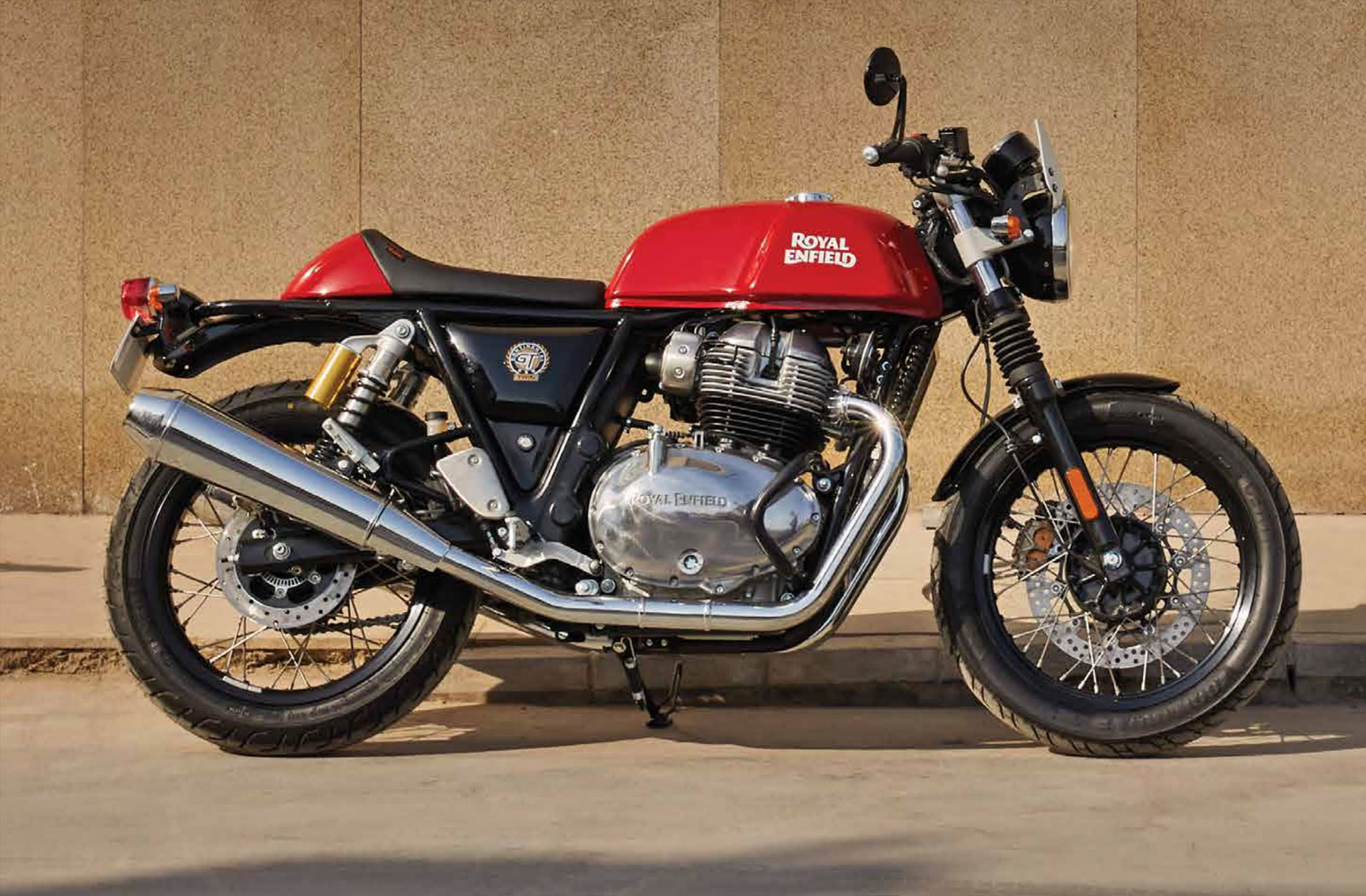

Aesthetically the latest Continental GT 650 once again bares a close resemblance to its forefathers. It features all the stereotypical cafe racer styling cues with clip-on handlebars bars, a long fuel tank with deep knee indents, a seat hump and upswept megaphone-capped exhausts. As with the previous models, the Continental GT 650 comes in a bold red paint scheme, but Enfield has also released several retro-inspired colourways including a very appealing chrome tanked version. The spoked rims, twin gauges, seat and lighting are all trademark Continental components too and they all combine to make the Continental GT 650 one of the most classic-looking modern retro motorcycles on the market.
Topping off this very attractive off-the-shelf cafe racer offering are a few mod cons. These include safety features like ABS, disk brakes front and rear, a 6-speed gearbox and electronic fuel injection. So although the Continental GT 650 may not be the fastest cafe racer money can buy, it is the best bang for buck modern classic on the market. Oh, and did I mention the 3-year unlimited kilometre warranty it comes with? (yes, you read that right)
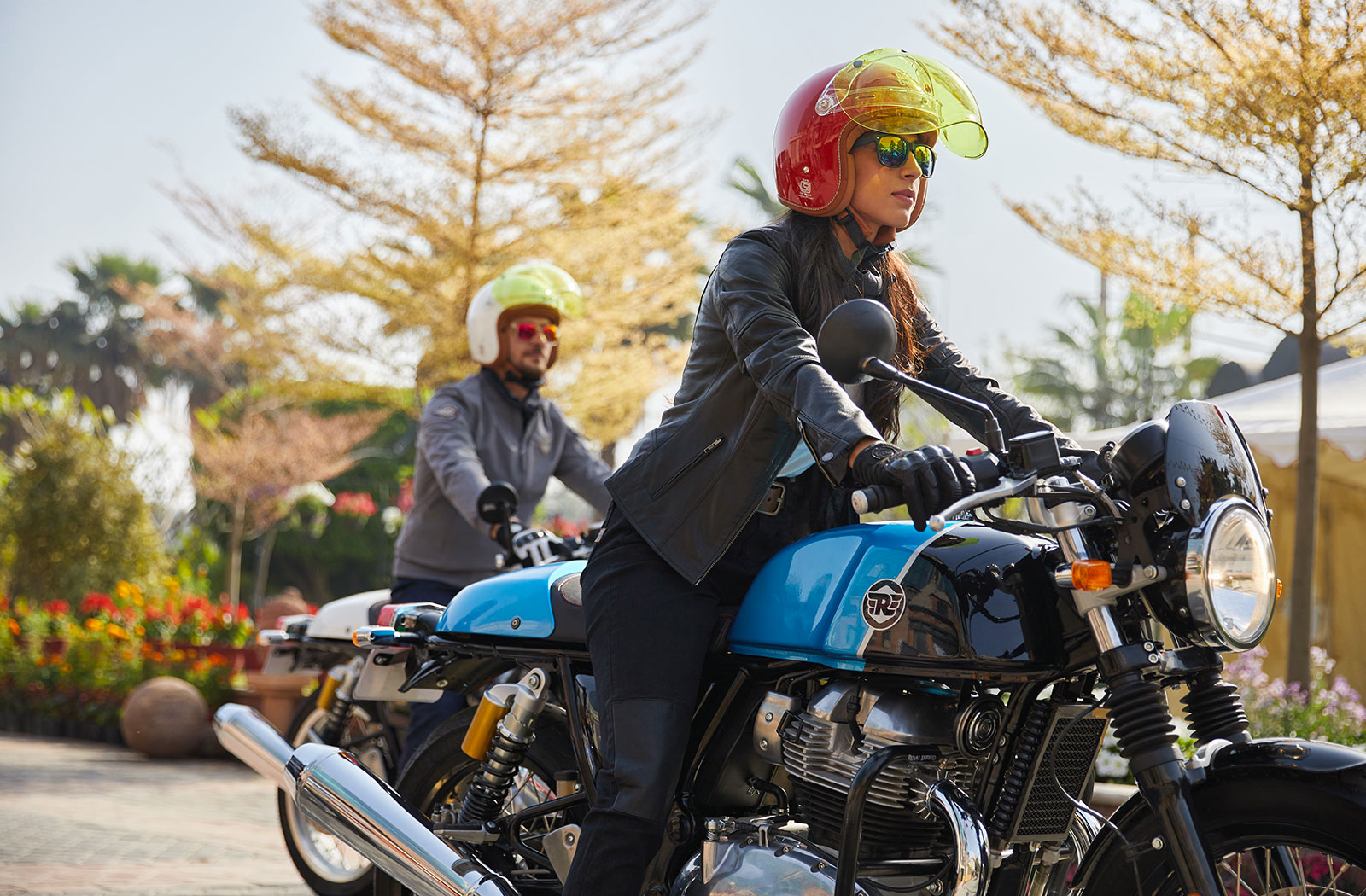

With a history that goes back well over half a century, I consider the Royal Enfield Continental GT to be the closest thing to a cafe racer that any manufacturer has ever produced. The GT 250 was ridden by young Rockers in the fifties and today’s albeit vastly superior version of that same bike stays true to its roots. Royal Enfield gets top marks for consistency and authenticity from 1963 right through to the present day. Whether you’re a new rider wanting a reliable, affordable and easy-to-ride commuter or a seasoned rider looking to downscale to something with a truly classic feel the Continental GT is hard to beat.
View more Royal Enfield cafe racer stories here
